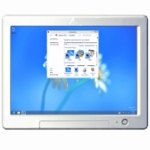
How to Change a Windows 8 Screen Saver
By Dave Taylor
The Question: I’m trying to get the hang of the new Microsoft Windows 8 system and am finding it tricky. I can’t figure out much of anything with the removal of the Start menu, but I’ll persevere. Meanwhile, how can I enable a screen saver since it appears that the default configuration is to have the screensaver disabled, which is a privacy issue here at work. Got a tip for me?
Dave’s Answer:
I’ve been getting into the Windows 8 zone too and I am finding it less of a change than it sounds you are: in fact, much of the change seems to be limited to the initial click, to how you interact with your home screen and the start “mosaic” instead of a start menu. With a little bit of monkeying around and pushing some random keyboard keys to see what happens (Escape is darn helpful) you might be surprised at how elegant the new interface proves.
Then again, it’s also clear that it’d be considerably better if I had a touchscreen on my Win8 system, rather than a mouse and cursor. It definitely feels like an OS user experience designed for a tablet or smartphone rather than a traditional PC laptop, but it’s a brave new world and I really do think that with an hour or two of exploring you’ll be happy with the changes and not yearn for Windows 7. Too much. 😀
Actually, I expect someone will come out with a Start Menu app for Win8 that will let you add the mainstay element of Windows since the very beginning. I’d recommend against it, personally, since I’m a big fan of making switches and learning new things, but I know plenty of people who don’t subscribe to the “all change is good” philosophy!
So let’s jump in to the Windows 8 experience. First off, as I’m sure you’ve realized, the Desktop is nice and blank and you need but move your cursor to any of the four corners to get the slide-out menu to appear:

You can see here that, top to bottom, the options are Search, Share, Start, Devices and, the one we want, Settings. Click on the gear icon to see what settings you can tweak:

Now that’s a nice, elegant interface! For this task, we’ll want “Personalization” so click (or, if you’re lucky, tap) on that.
Now you’re into the older style Windows interface and everything should look familiar:
This post is excerpted with permission from Dave Taylor.
Sign up for Dave’s emails about free tech support and special offers on books, seminars, workshops and more.



